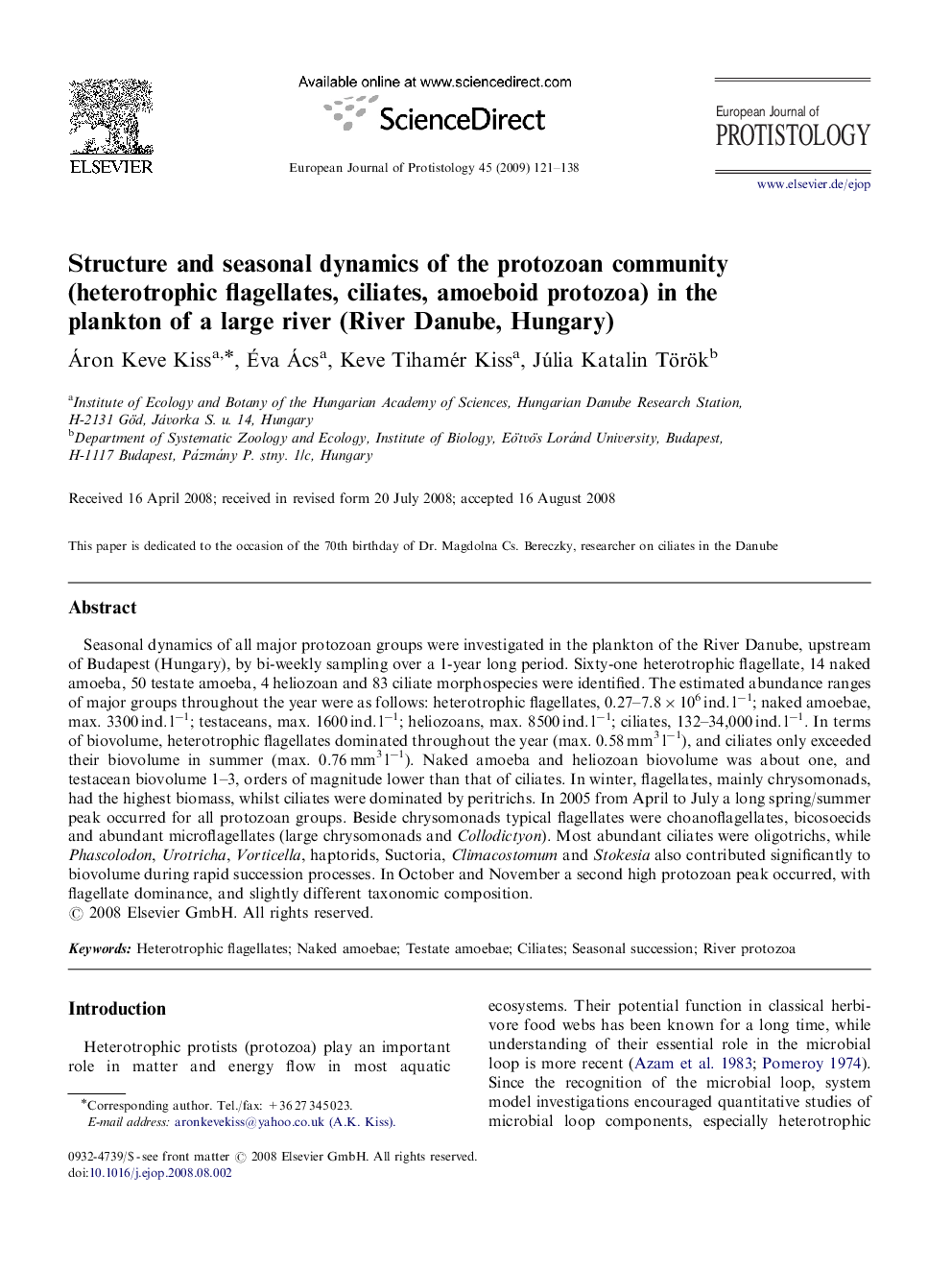| Article ID | Journal | Published Year | Pages | File Type |
|---|---|---|---|---|
| 2047336 | European Journal of Protistology | 2009 | 18 Pages |
Seasonal dynamics of all major protozoan groups were investigated in the plankton of the River Danube, upstream of Budapest (Hungary), by bi-weekly sampling over a 1-year long period. Sixty-one heterotrophic flagellate, 14 naked amoeba, 50 testate amoeba, 4 heliozoan and 83 ciliate morphospecies were identified. The estimated abundance ranges of major groups throughout the year were as follows: heterotrophic flagellates, 0.27–7.8×106 ind. l−1; naked amoebae, max. 3300 ind. l−1; testaceans, max. 1600 ind. l−1; heliozoans, max. 8500 ind. l−1; ciliates, 132–34,000 ind. l−1. In terms of biovolume, heterotrophic flagellates dominated throughout the year (max. 0.58 mm3 l−1), and ciliates only exceeded their biovolume in summer (max. 0.76 mm3 l−1). Naked amoeba and heliozoan biovolume was about one, and testacean biovolume 1–3, orders of magnitude lower than that of ciliates. In winter, flagellates, mainly chrysomonads, had the highest biomass, whilst ciliates were dominated by peritrichs. In 2005 from April to July a long spring/summer peak occurred for all protozoan groups. Beside chrysomonads typical flagellates were choanoflagellates, bicosoecids and abundant microflagellates (large chrysomonads and Collodictyon). Most abundant ciliates were oligotrichs, while Phascolodon, Urotricha, Vorticella, haptorids, Suctoria, Climacostomum and Stokesia also contributed significantly to biovolume during rapid succession processes. In October and November a second high protozoan peak occurred, with flagellate dominance, and slightly different taxonomic composition.
